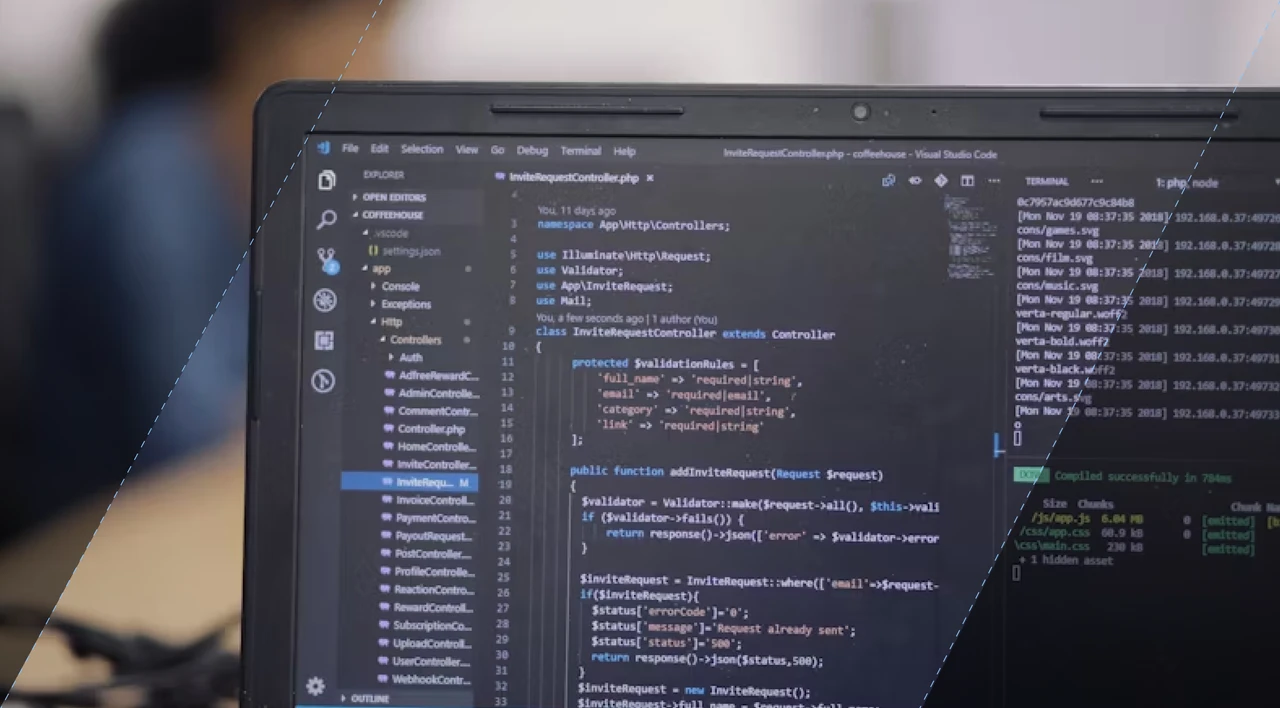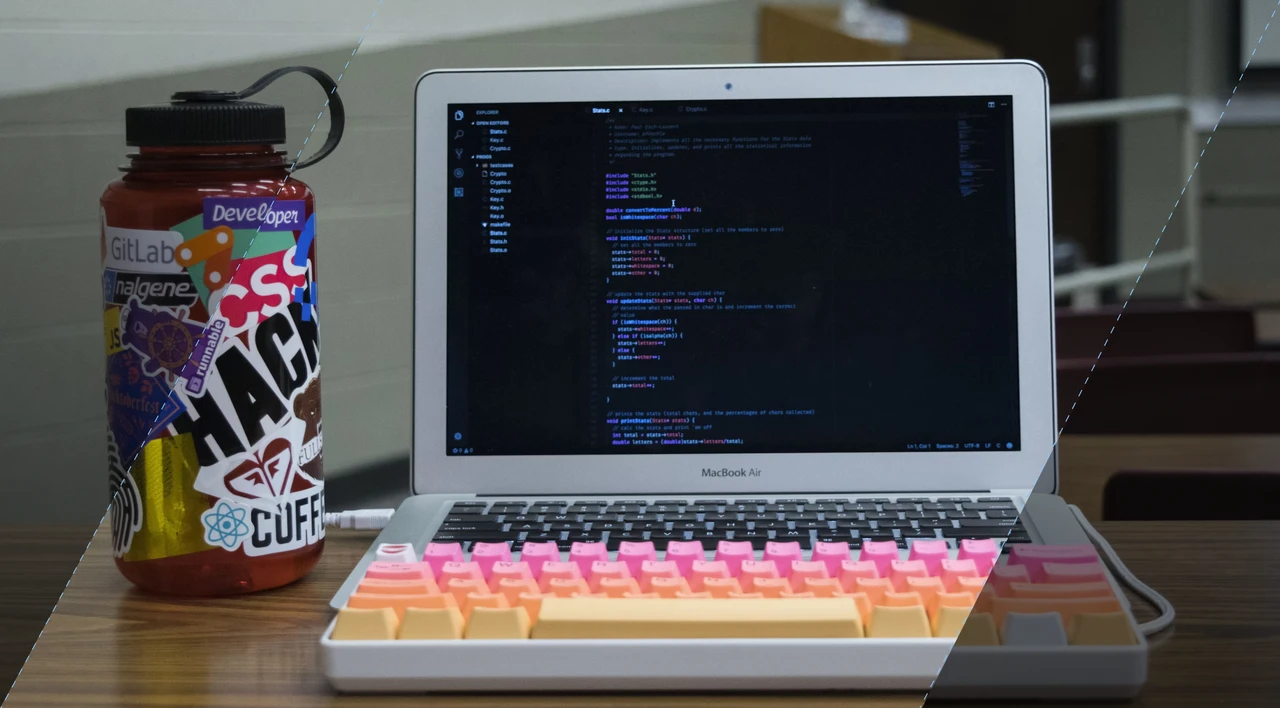SHARE
Objective C vs Swift: Which is Better for iOS App Development?

Contents
Contents
Choosing the right programming language is crucial for the success of your iOS app development project. Objective-C and Swift are two widely used languages in the iOS development community, each with its own strengths and weaknesses. But which one is better for your project?
According to the Stack Overflow 2021 survey, 5.1% of respondents use Swift, while 2.8% use Objective-C, indicating an approximate 2:1 ratio in favor of Swift.
In this article, we will explore the pros and cons of Objective-C and Swift to help you make an informed decision. Whether you’re a seasoned developer or just starting out, understanding the differences between these two languages is essential for creating high-quality iOS applications.
Key Takeaways:
- Objective-C is the standard language for iOS app development and has been around for many years.
- Swift is a newer and more modern language introduced by Apple in 2014.
- Swift offers faster performance and a simpler syntax compared to Objective-C.
- Objective-C is still relevant for legacy projects and integrating with older code.
What is Objective-C?
Objective-C is a popular programming language used for iOS mobile app development, acquired by Apple in the 1980s. It has since become the standard language for building iOS applications. Objective-C offers developers the ability to create sophisticated programming tasks with a focus on object-oriented programming. This allows for the development of scalable iOS applications.
Despite its widespread usage and reliability, Objective-C lacks the modern functionalities and features provided by Swift, a newer programming language also developed by Apple. While Objective-C continues to be used in many projects, Swift has gained momentum for its enhanced capabilities and performance.
What is Swift?
Swift is a modern programming language developed by Apple as an alternative to Objective-C. It is now the 20th most commonly used programming language in the world.
Introduced in 2014, Swift has quickly gained popularity among iOS app developers for its modern features and efficient performance. It is specifically designed for iOS app development and offers numerous advantages over Objective-C.
Why is Swift the Preferred Choice?
Although 13% of developers are proficient in both Objective-C and Swift., Swift is hailed as a modern programming language that combines the best elements of various programming languages.
It offers a simpler syntax, making it easier to learn and use compared to Objective-C. This ease of use is especially beneficial for beginners or developers transitioning from other programming languages.
Swift is known for its speed and efficiency, allowing developers to create high-performance apps. It is built with advanced compiler optimization techniques and offers features like optional chaining and null coalescing, which make code more efficient and reduce common programming errors.
Another advantage of Swift is its strong interoperability with Objective-C. Developers can seamlessly integrate Swift code with existing Objective-C codebases, making it easier to adopt Swift in projects where Objective-C is already in use.
Evolution and community support
Since its introduction, Swift has continued to evolve, with regular updates and improvements being released by Apple. This demonstrates Apple’s commitment to the language and ensures that developers have access to the latest tools and features for iOS app development.
Swift also has a vibrant community of developers who contribute to its growth and advancement. The community provides resources, libraries, and frameworks that further enhance the development experience and make it easier to build strong iOS applications.
Overall, Swift offers a modern, efficient, and user-friendly programming language for iOS app development. Its continuous evolution and strong community support make it a compelling choice for developers looking to build innovative and high-quality iOS applications.
|
Advantages of Swift |
Advantages of Objective-C |
|
1. Simplified syntax for easier learning and usage |
1. Widely regarded as the standard language for iOS development |
|
2. Faster performance and efficiency |
2. Strong interoperability with existing Objective-C codebases |
|
3. Reduced programming errors with features like optional chaining and null coalescing |
3. Mature and well-established language with extensive resources and support |
|
4. Continuously evolving with regular updates and improvements |
4. Still widely used for legacy projects and integrating with older code |
|
5. Strong community support and resources |
5. Extensive libraries and frameworks available |
Syntax and Readability
When it comes to programming languages, syntax, and readability play a crucial role in the development process. In the case of Objective-C and Swift, these two languages have distinct differences in terms of syntax and the ease of understanding the code.
Objective-C, being an older language, has a verbose syntax that can be overwhelming for beginners. It relies heavily on brackets and parentheses, which can make the code appear cluttered and complex. While experienced developers may find this syntax familiar and comfortable to work with, it can be challenging for newcomers to grasp.
On the other hand, Swift takes a more modern approach to syntax. It embraces a cleaner and more concise structure, which makes the code more readable and easier to comprehend. The syntax of Swift is designed to be closer to other popular programming languages like Java (which is currently used by 17.1 million people) or Python, making it more accessible to those transitioning from other programming backgrounds.
As you can see from the example, Swift code appears more concise and easier to read compared to the Objective-C code. The simplicity of Swift syntax reduces the cognitive load on developers, allowing them to focus more on the logic and functionality of the code rather than deciphering complex syntax.
In summary, while Objective-C has its strengths in terms of its long-standing presence as a reliable programming language, Swift offers a more modern and readable syntax that can greatly benefit developers, especially those new to iOS app development. The clean and concise syntax of Swift makes it easier to write, understand, and maintain code, improving overall productivity and efficiency.
Performance and Speed
When it comes to iOS app development, performance and speed are crucial factors to consider. In this section, we will explore how Objective-C and Swift compare in terms of performance and speed.
Swift: Faster and More Efficient
Swift is specifically designed to be faster and more efficient than Objective-C. It utilizes a modern compiler and runtime, which allows for faster execution of code and reduces memory usage. Apple claims that Swift can be up to 2.6 times faster than Objective-C, making it a compelling choice for developers looking for optimal speed and performance.
Varying Performance
While Swift is generally considered to have superior performance, it’s important to note that performance can vary depending on the specific use case. Certain types of computations or operations may favor Objective-C over Swift, particularly in scenarios where compatibility with older code or integration with legacy projects is a factor.
Both Objective-C and Swift are statically typed and use the same iOS SDK and LLVM compiler. However, Swift’s modern approach to programming and built-in optimizations typically result in improved performance.
It’s worth noting that performance is influenced by multiple factors, including code complexity, hardware specifications, and optimization techniques used during development. Therefore, it is essential to consider the specific requirements and constraints of your app development project when assessing performance and speed.
Conclusion
In conclusion, both Objective-C and Swift are excellent languages for iOS app development. Swift, being a more modern and efficient language, offers superior performance and speed, making it a great choice for developers. Its simpler syntax and built-in features also make it easier to learn and use, especially for beginners.
However, Objective-C still holds its place in the industry, particularly for legacy projects and integrating with older codebases. It remains a reliable language with a rich history and a wide range of resources available. The choice between Objective-C and Swift ultimately depends on your specific needs and requirements for your iOS app development project.
Whether you decide to go with Objective-C or Swift, both languages provide the necessary tools for creating innovative and high-quality iOS applications. Take into consideration the complexity of your project, your team’s skill set, and the compatibility of your existing codebase when making your decision. By carefully assessing these factors, you can choose the language that best suits your iOS app development needs.
Discover how Flatirons’ mobile app development service can develop and design custom cross-platform mobile apps tailored to your business needs and user expectations.
Frequently Asked Questions
What is the difference between Objective-C and Swift?
Objective-C is an older programming language that has been widely used for iOS app development, while Swift is a newer, more modern language introduced by Apple in 2014. Swift offers a simpler syntax, better performance, and an easier learning curve compared to Objective-C.
Which programming language should I choose for iOS app development?
The choice between Objective-C and Swift depends on your specific needs and requirements. Swift is generally recommended for beginners or those looking for a more modern and efficient language, while Objective-C may be preferred for legacy projects or compatibility with older code.
Is Swift faster than Objective-C?
Yes, Swift is designed to be faster and more efficient than Objective-C. Apple claims that Swift can be up to 2.6 times faster than Objective-C, thanks to its modern compiler and runtime.
Which programming language is easier to learn and use, Objective-C or Swift?
Swift is generally considered easier to learn and use compared to Objective-C. It has a simpler syntax that is more readable and closer to modern programming languages like Java or Python. Swift also offers built-in features that make coding more efficient.
Can I use Objective-C and Swift together in my iOS app development project?
Yes, Swift is fully compatible with Objective-C. You can easily mix and match Objective-C and Swift code in the same project. This allows you to leverage existing Objective-C libraries and gradually transition to Swift if desired.
Mobile App Development Experts
Flatirons provides custom mobile development services tailored for your business needs.
Get the CEO's Take
Handpicked tech insights and trends from our CEO.
Mobile App Development Experts
Flatirons provides custom mobile development services tailored for your business needs.
Get the CEO's Take
Handpicked tech insights and trends from our CEO.

Digital Product Development: Enhance Your Business Offerings
Flatirons
Sep 12, 2025
React SEO: Optimize Your React Apps for Search Engines
Flatirons
Sep 07, 2025
Will Software Engineers Be Replaced by AI?
Flatirons
Aug 31, 2025
Best Data Analytics Strategy for Business Growth
Flatirons
Aug 25, 2025
Ruby Case Statement: A Simplified Approach to Conditional Logic
Flatirons
Aug 19, 2025
Team Augmentation: Enhance Your Workforce Capabilities
Flatirons
Aug 13, 2025